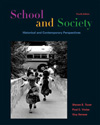Chapter 15 begins by reiterating a fundamental theme of this volume: teaching and learning take place in a cultural context. Moreover, it appears important that educators recognize that children and youth grow and develop in multiple cultural contexts outside the school. Understanding those contexts affords a better understanding of students in schools, collectively and individually, because individual identities are shaped in the cultural contexts of family, neighborhood, and popular culture (including youth culture), which is local, national, and global in scope. This chapter argues that it is important for teachers to understand and work effectively with a child’s most immediate cultural context: the family. For the majority of children and youth, the most immediate cultural context is the family, although families may be structured very differently. It is usually through some kind of family unit or a substitute for the family that a child learns language, values, habits, and ways of interacting with others. This chapter explores the intersection of the family with local community culture and youth culture. It also examines the idea of teachers working productively with parents or guardians as potential partners to support successful learning for students in school. It is clear that significant barriers impede successful teacher-parent collaborations and that a great deal can be learned by studying how parents interact with schools and teachers. |



 2002 McGraw-Hill Higher Education
2002 McGraw-Hill Higher Education